|
 Gymnomyces parvisaxoides Gymnomyces parvisaxoides
BiostatusPresent in region - Indigenous. Endemic
Images (click to enlarge)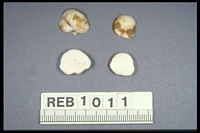
Owner: R.E. Beever | 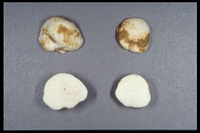
Owner: R.E. Beever | 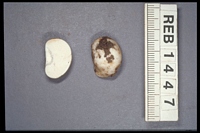
Owner: R.E. Beever | 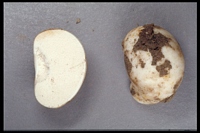
Owner: R.E. Beever | 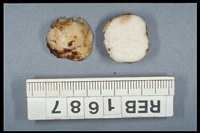
Owner: R.E. Beever | 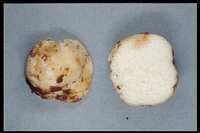
Owner: R.E. Beever | 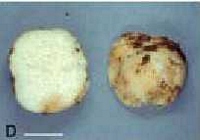
Caption: Fig. 3 D, Gymnomyces parvisaxoides; Scale bar = 10 mm. | 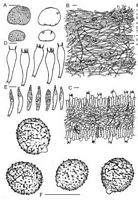
Caption: Fig. 8 Gymnomyces parvisaxoides.A, Basidioma; B, peridiopellis and peridial context; C,
hymenophoral trama and hymenium; D, basidia; E, hymenop | 
Caption: Fig. 9 Spores of Gymnomyces
parvisaxoides. Scale bars = 10 mm. | 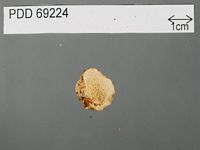
Caption: REB 1687, Type
Owner: Ross Beever | 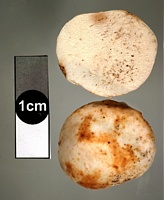
Owner: J.A. Cooper | 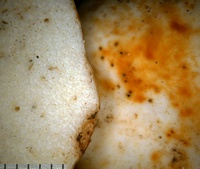
Owner: J.A. Cooper | 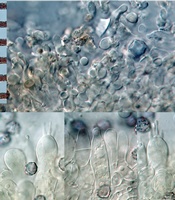
Caption: top: epithelial cells. Bottom: basidia and cystidia.
Owner: J.A. Cooper | 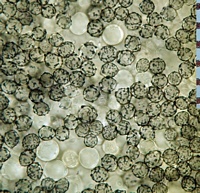
Caption: spores (melzers, no DIC)
Owner: J.A. Cooper | 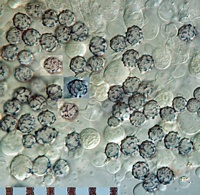
Caption: spores (melzers, DIC)
Owner: J.A. Cooper | 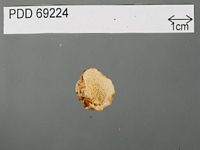
Caption: Dried type specimen
Owner: Herb PDD | |
Article: Lebel, T. (2002). Sequestrate Russulales of New Zealand: Gymnomyces and Macowanites. New Zealand Journal of Botany 40(3): 489-509 (http://www.rsnz.org/publish/abstracts.php).
Description: Basidiomata 3-35 x 3-25 mm, subglobose to lobed. Peridial surface dry, smooth, white with
pale yellow to orange brown patches. Gleba white, loculate, chambers small and crowded.
Stipe rarely present as a small exerted basal pad 1-2 x 1-2 mm, easily detached from
basidioma. Columella rarely present as a thin translucent, percurrent strand, ± 1 mm
wide. Odour slightly acrid, and taste not distinctive. Latex absent. Peridiopellis 8-20 µm wide,
a patchy turf of upright to repent, hyaline hyphal tips 2-4.5 µm diam., becoming gelatinised
and compacted in older basidiomata. Peridial context 115-210 µm wide, of tightly interwoven,
hyaline hyphae 2-3.5 µm diam., sometimes in tight knots, and scattered, inflated hyphae 3-8
µm diam., refractive golden in KOH. Endocystidia and sphaerocysts absent. Hymenophoral
trama 18-40 µm wide, of interwoven, hyaline hyphae 2-5 µm diam. and scattered thin,
smooth, sinuous hyphae 2-3 µm diam., refractive in KOH, sphaerocysts absent. Subhymenium
11-28 µm wide, with 2-3 tiers of irregular cells 7-15 µm diam. Basidia 28-41 x 7-11 µm,
cylindrical to clavate, hyaline, with 2, 3, or 4 sterigmata 4-7 µm long. Cystidia 11-35 x 5-9
µm, cylindrical, clavate or fusoid with mucronate or obtuse apices and granular contents;
scattered to patchily abundant, arising in the trama, not protruding beyond basidia. Spores
8.5-11 x 7-10 µm (9.73 ± 0.27 x 8.83 ± 0.54), Q = 1.02-1.09, globose to subglobose,
orthotropic. Ornamentation amyloid, of abundant isolated warts 0.5-0.8 µm high,
many connected in short branched lines, sometimes forming a partial reticulum. Hilar appendix
central 1-2 x 1-2 µm; plage absent. Spore colour in mass off-white.
Habitat: HABITAT AND DISTRIBUTION: Hypogeous to partially exposed, in small groups under
leaf litter in Nothofagus menziesii and N. solandrii forests. Fruiting period May-Sep.
Notes: ETYMOLOGY: The specific epithet refers to the general appearance of the basidioma, "small
stonelike", from the Latin parvus meaning small, andsaxum meaning stone.
NOTES: Gymnomyces parvisaxoides may be distinguished from other sequestrate Russulales
of New Zealand by the white peridium with yellow or orange-brown patches, small hymenial
cystidia and low, partially reticulate spore ornamentation. Gymnomyces parvisaxoides resembles a number of
collections from Australia which are
associated with Eucalyptus spp. All collections generally have a white peridium with yellow or
orange to red patches, small hymenial cystidia, and spore ornamentation of low branching lines
or a partial reticulum. The Australian collections have a more robust spore ornamentation with
more connections between elements, and a narrow, tangled trichodermial peridiopellis rather
than the patchy turf of G.parvisaxoides.
|